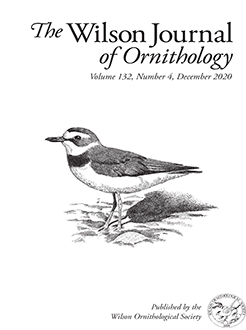Animal communication carries the risk of signal exploitation by predators, and thus many prey species will adjust their signals into more discreet messages to conspecifics, or conspicuous antipredator cues. Although rails (Family Rallidae) use the visual display of tail flicking as a warning of vigilance toward predators, how these birds alter their vocal behavior based on perceived predation risk remains little studied. The calls of owls, predatory birds that consume a variety of rallid species and can home in on acoustic cues of their prey, can reduce singing in numerous bird species. We applied remotely activated broadcasts and autonomous recording units to study whether rails in the wetlands of the Lake Calumet region near Chicago, Illinois, would decrease their vocal activity rate following the broadcast of a rallid predator, the Great Horned Owl (Bubo virginianus). Contrary to predictions, Soras (Porzana carolina) significantly increased vocal activity when exposed to owl vocalizations and decreased vocal activity when exposed to a harmless control. Our results indicate that rails appear to increase their vocal activity as a potential alarm mechanism, likely to reduce predation risk by warning conspecifics.
How to translate text using browser tools
14 September 2021
Calling owl: Rails adjust vocal activity rates in response to changes in predation risk
Daniel L. Goldberg,
Toby A. Bassingthwaite,
Michael P. Ward,
Angelo P. Capparella
ACCESS THE FULL ARTICLE
Acoustic interactions
alarm calls
playback
predators
rallidae
Sora





